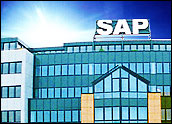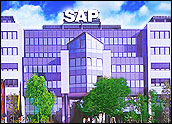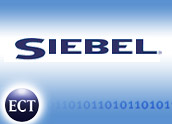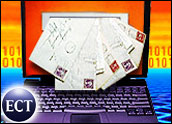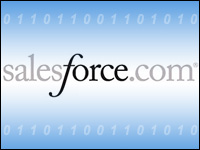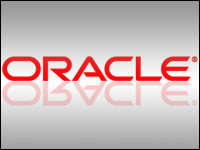
The first week of the U.S. Department of Justice (DOJ) trial against Oracle’s US$7.7 billion hostile takeover attempt of PeopleSoft has proven to be as much a high-stakes poker game as the enterprise software market in which the two compete.
Oracle opened its case with the previously undisclosed Microsoft and SAP merger talks — dragging both companies into the fray and forcing them to issue statements regarding their proprietary discussions.
“In my opinion Oracle won the first round this week,” Steve Trotta, software industry analyst for Technology Business Research, told CRM Buyer.
Market Gains
Many investors are already banking on an Oracle win. During the first week of the trial, Nasdaq, with its heavy burden of technology companies, had a modest composite gain of 1 percent.
Despite a slow market and the trial, both PeopleSoft and Oracle showed gains. PeopleSoft stock gained 8 percent, ending the four-day week at $18.75, while Oracle gained 6 percent and ended at $11.71. However, both companies’ stocks opened lower Monday.
This week, the second week of the trial, Oracle is scheduled to reveal its quarterly results with higher sales and earnings expected for its fourth quarter.
Two Key Issues
During the trial so far, there has been discussion over whether U.S. district judge Vaughn Walker will unseal confidential and proprietary information and also whether IBM’s business strategy favors PeopleSoft over Oracle for profitability reasons.
Ultimately, however, the case still hangs on two key issues: how the enterprise-application market is defined and whether sufficient competition exists within that space.
“Judge Walker is questioning the premise on how the government defined the business application market on which to measure competition,” Trotta said. “Although Oracle came out strong in the beginning of the trial, I think detail will show that several verticals are dominated by the big three — PeopleSoft, Oracle and SAP.”
For his part, Denis Pombriant, managing principal at Beagle Research Group, said that he believes the DOJ’s concern is that Oracle will buy PeopleSoft just for its customer base and then over time replace the PeopleSoft applications with Oracle solutions.
“If this is the case, we all understand how antitrust comes into play,” he told CRM Buyer. “If not, winning the case could be the worst thing that could happen to Oracle because of the enormously complex integration issues involved both at an organizational and software-code level.”
Microsoft Complications
The DOJ has asserted that insufficient competition in the market now exists, which is why it opposes the merger. The DOJ also has noted that the cost of entry was too high for new competitors.
However, Microsoft’s mixed-messages have added a new twist over whether the market truly would not be competitive if Oracle and PeopleSoft were to merge.
In March, Microsoft provided the DOJ with a sworn statement saying it would not enter the enterprise ERP market for at least two years. But Oracle’s revelation of Microsoft’s flirtation with SAP has obscured Microsoft’s true intent. Microsoft already has one toe in the water, selling its CRM solution into the midmarket.
“Going forward, the case will involve more significant competitive detail in order to get a better feel for two companies’ intentions in various markets, mainly the midmarket as well as specific verticals,” Trotta said.
“This is where things could get interesting because everyone is targeting small businesses as their next major growth opportunity,” he added.
Explore the Verticals
For his part, Trotta said that details about each company’s industry and vertical efforts should be explored to see where exactly the PeopleSoft and Oracle are seeing from other vendors.
“What is the Herfindahl index by vertical?” he asked. “For example, would the Oracle acquisition of PeopleSoft affect business application pricing in the automotive or the pharmaceuticals verticals?”
The United States uses the Herfindahl index to determine whether mergers are equitable to society. The index is an economic measure of the size of companies in relationship to their industry — indicating the amount of competition among them. It is useful in detecting harmful monopolies, although it is dependent upon the definition of a particular market.
Too Late?
Pombriant, on the other hand, bypassed the market-competition question. Instead he argued that, from a market perspective, it is already too late for a Oracle-PeopleSoft merger — making the entire trial moot.
“Maybe we are at a point where the complexities of integrating two companies into a megasoftware firm is so enormous, expensive, time-consuming and complex that such mergers are no longer viable,” he said. “Maybe that’s in part why the Microsoft and SAP merger talks didn’t continue.”
As Oracle and PeopleSoft sit in the courtroom the rest of the month, the market moves on, Pombriant explained. According to him, the paradigm might be shifting because the traditional means of building and delivering software functionality has become too expensive and too fraught with risk for many enterprises to cope with.
Pombriant went on to say that the industry is already breaking down the business processes and organizing them by following the Linux model — and adding profitability to that mix.
Moving to Linux Model?
According to Pombriant, Web services can fit into a Linux-like model, and this model is already driving down the cost of software acquisition, maintenance and training. Web services also streamlines delivery and increases customer acceptance, he said.
In addition, the enterprise software industry possibly split into two groups of symbiotic companies – publishing companies that offer application suites and development companies that handle research and product creation. Both will work together to reduce costs and improve product reliability for customers.
For example, on-demand CRM vendor salesforce.com has opened its application-programming interface known as “sforce” and has started to leverage it by recruiting a thousand independent developers to create complementary solutions to the company’s core CRM applications for free.
“Saleforce.com then provides them a distribution channel for their applications,” Pombriant said.
In any event, Judge Walker’s decision may not even matter, if the market continues to mutate the way it has, Pombriant concluded.


